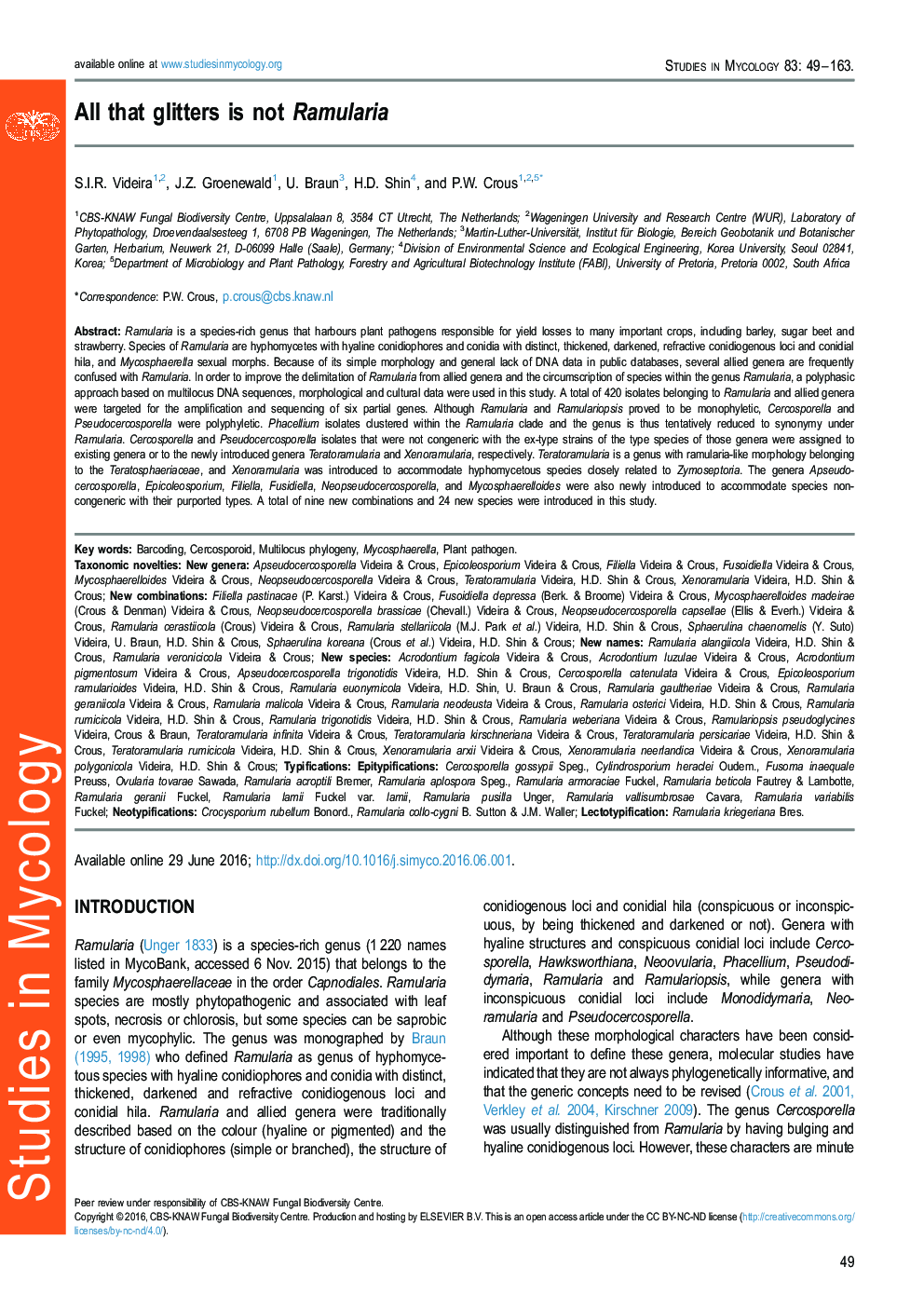| کد مقاله | کد نشریه | سال انتشار | مقاله انگلیسی | نسخه تمام متن |
|---|---|---|---|---|
| 4370608 | 1616937 | 2016 | 115 صفحه PDF | دانلود رایگان |

Ramularia is a species-rich genus that harbours plant pathogens responsible for yield losses to many important crops, including barley, sugar beet and strawberry. Species of Ramularia are hyphomycetes with hyaline conidiophores and conidia with distinct, thickened, darkened, refractive conidiogenous loci and conidial hila, and Mycosphaerella sexual morphs. Because of its simple morphology and general lack of DNA data in public databases, several allied genera are frequently confused with Ramularia. In order to improve the delimitation of Ramularia from allied genera and the circumscription of species within the genus Ramularia, a polyphasic approach based on multilocus DNA sequences, morphological and cultural data were used in this study. A total of 420 isolates belonging to Ramularia and allied genera were targeted for the amplification and sequencing of six partial genes. Although Ramularia and Ramulariopsis proved to be monophyletic, Cercosporella and Pseudocercosporella were polyphyletic. Phacellium isolates clustered within the Ramularia clade and the genus is thus tentatively reduced to synonymy under Ramularia. Cercosporella and Pseudocercosporella isolates that were not congeneric with the ex-type strains of the type species of those genera were assigned to existing genera or to the newly introduced genera Teratoramularia and Xenoramularia, respectively. Teratoramularia is a genus with ramularia-like morphology belonging to the Teratosphaeriaceae, and Xenoramularia was introduced to accommodate hyphomycetous species closely related to Zymoseptoria. The genera Apseudocercosporella, Epicoleosporium, Filiella, Fusidiella, Neopseudocercosporella, and Mycosphaerelloides were also newly introduced to accommodate species non-congeneric with their purported types. A total of nine new combinations and 24 new species were introduced in this study.
Journal: Studies in Mycology - Volume 83, March 2016, Pages 49–163